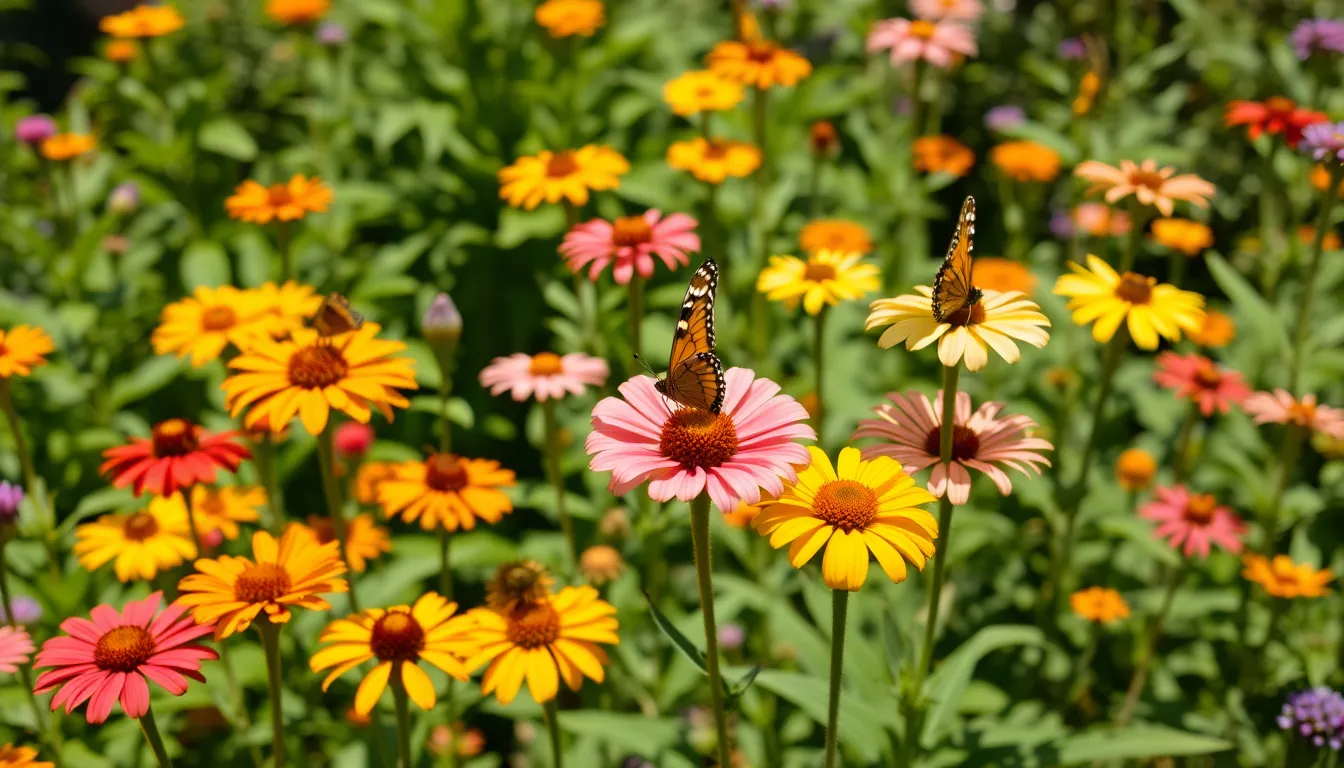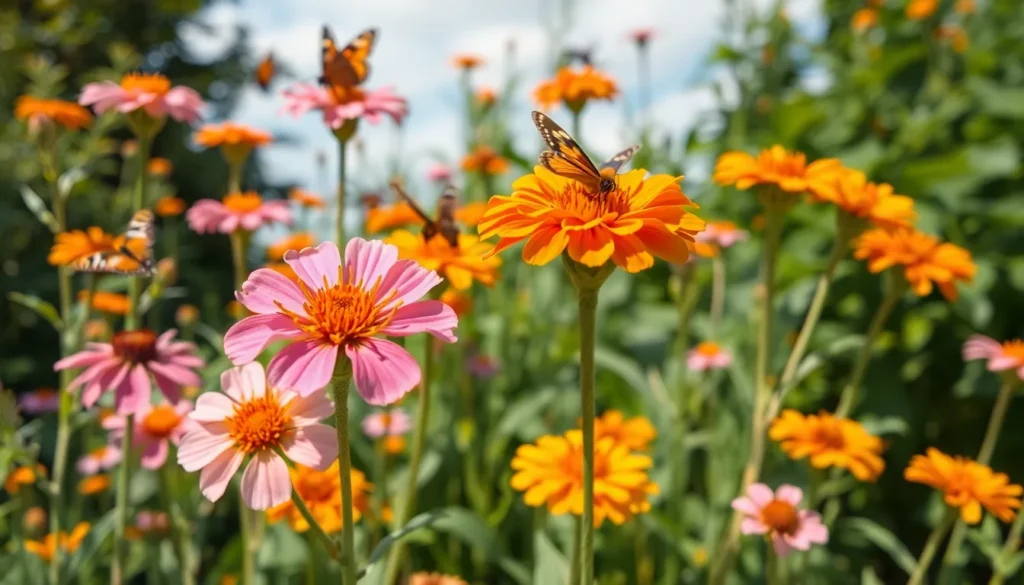When it comes to choosing the right milkweed for hingagyi, the options can feel as overwhelming as a kid in a candy store. With so many varieties out there, how does one pick the perfect match? Fear not! This guide will help navigate the wild world of milkweed, ensuring that your hingagyi thrives like a superstar on a red carpet.
Milkweed isn’t just a pretty plant; it’s the VIP lounge for butterflies and other pollinators. Selecting the right type can make all the difference in attracting these winged wonders to your garden. So buckle up and get ready to dive into the colorful world of milkweed, where the right choice can turn your garden into a buzzing paradise. After all, who wouldn’t want to be the talk of the town—or at least the neighborhood?
Table of Contents
ToggleUnderstanding Hingagyi
Hingagyi, known for its intimate relationship with specific milkweed species, serves as a habitat for various butterflies and pollinators. This plant, known scientifically as Asclepias, acts as a host for monarch caterpillars, providing essential nutrients during their development. Various milkweed options cater to the environmental conditions suited for hingagyi, such as soil type and climate.
Selecting the right milkweed impacts not only the population of local butterflies but also the entire ecosystem. For instance, Asclepias tuberosa, or butterfly weed, thrives in dry, sandy soils and attracts multiple pollinators. Conversely, Asclepias incarnata, also known as swamp milkweed, flourishes in moist areas, making it ideal for wetland gardens.
In choosing milkweed for hingagyi, local climate and surrounding flora play a crucial role. Integrating both native and non-invasive milkweed varieties supports biodiversity while enhancing garden aesthetics. They encourage healthy food sources for caterpillars, promoting vibrant butterfly populations.
Understanding the growing requirements of these plants fosters a thriving environment for hingagyi’s inhabitants. For example, ample sunlight and well-drained soil ensure healthy growth and reproduction. Furthermore, proper spacing between plant specimens prevents overcrowding and encourages air circulation, which mitigates disease risks.
Diverse species of milkweed also create visual interest within garden spaces. By combining different heights, flower colors, and blooming periods, gardeners cultivate a dynamic ecosystem. Cultivating these essential plants leads to a flourishing hingagyi, enhancing not only beauty but also ecological health.
Importance Of Milkweed For Hingagyi

Milkweed plays a vital role in supporting hingagyi. It serves as a habitat, host, and food source for numerous butterflies and pollinators.
Nutritional Benefits
Asclepias species provide essential nutritional benefits for caterpillars. These plants contain specific compounds that help caterpillars grow and develop into healthy butterflies. For instance, the toxins present in milkweed deter predators and ensure that the caterpillars remain safe. Such properties enhance the chances of survival for hingagyi residents. Nectar-rich flowers also attract adult butterflies, providing them with vital sustenance during their lifespan.
Habitat Considerations
Different milkweed varieties cater to specific habitat conditions. Asclepias tuberosa thrives in well-drained, sandy soils, while Asclepias incarnata flourishes in moist environments. These adaptations directly influence the biodiversity within the hingagyi ecosystem. Proper selection of milkweed ensures that various pollinators find suitable breeding grounds. Additionally, milkweed contributes to the overall ecological balance by encouraging effective pollination and supporting other flora in the vicinity. Thus, prioritizing the right species fosters a vibrant and sustainable environment for hingagyi.
Which Milkweed Varieties Are Best?
Selecting the right milkweed variety significantly impacts the success of hingagyi gardens. Several suitable options thrive in varying conditions, each supporting diverse butterfly and pollinator species.
Common Milkweed
Asclepias Syriaca, commonly known as common milkweed, excels in sunny areas and well-drained soils. This variety grows robustly, reaching heights of 3 to 5 feet. Known for large flower clusters, it attracts monarch butterflies and numerous pollinators. Common milkweed adapts to various soil types, making it a versatile choice. Gardeners frequently appreciate its ability to thrive in disturbed sites, further enhancing local biodiversity.
Butterfly Milkweed
Asclepias tuberosa, or butterfly milkweed, stands out with its vibrant orange blooms. This perennial flourishes in dry, sandy soils and tolerates drought conditions. Typically growing 1 to 3 feet tall, it attracts many butterflies, including the iconic monarch. Pollinators benefit from its nectar-rich flowers, which bloom throughout the summer. Its unique coloration adds visual interest, making butterfly milkweed a desirable addition to any garden.
Swamp Milkweed
Asclepias incarnata, known as swamp milkweed, prefers moist areas and wet soils. This species can grow up to 4 feet tall, showcasing clusters of pink to purple flowers. Swamp milkweed attracts a diverse array of butterflies and other beneficial insects. Its deep roots promote soil stability and moisture retention. Ideal for rain gardens or near water features, this variety contributes to a healthy ecosystem while supporting hingagyi’s inhabitants.
Tips For Growing Milkweed
Growing milkweed successfully requires attention to specific conditions. Choosing the right soil type is essential for healthy plants.
Soil Requirements
Milkweed varieties prefer well-drained soil that can retain some moisture. Sandy or loamy soils support robust growth, while clay soils often retain too much water. When planting Asclepias tuberosa, use sandy soil with good drainage. Notably, Asclepias incarnata thrives best in moist soil conditions. Understanding local soil composition aids in providing the right environment. Organic matter, such as compost, can enhance soil richness, promoting healthy root development. Regular testing for pH levels can identify necessary amendments, ensuring optimal conditions for different milkweed species.
Sunlight Needs
Milkweed plants generally thrive in full sun, requiring at least six hours of direct sunlight daily. Species like Asclepias syriaca flourish in open, sunny locations, making them ideal for gardens. Adequate sunlight boosts flowering and supports a vibrant habitat for butterflies. Some varieties tolerate partial shade, but reduced light may limit growth and attractiveness. Observing garden areas throughout the day helps determine the best placement for sun-loving plants. Regular monitoring of sunlight exposure can ensure that each species receives the light needed for optimal health and beauty.
Choosing the right milkweed for hingagyi is essential for creating a vibrant and sustainable garden. By selecting species that thrive in local conditions and cater to the needs of butterflies and pollinators, gardeners can significantly enhance biodiversity. Each milkweed variety brings unique benefits to the ecosystem while adding beauty to the landscape.
Investing time in understanding the specific requirements of these plants ensures a flourishing environment that supports both hingagyi and its inhabitants. With the right choices, it’s possible to cultivate a thriving habitat that not only attracts pollinators but also contributes to the overall health of the garden. Embracing the diversity of milkweed will lead to a more dynamic and resilient ecological space.








